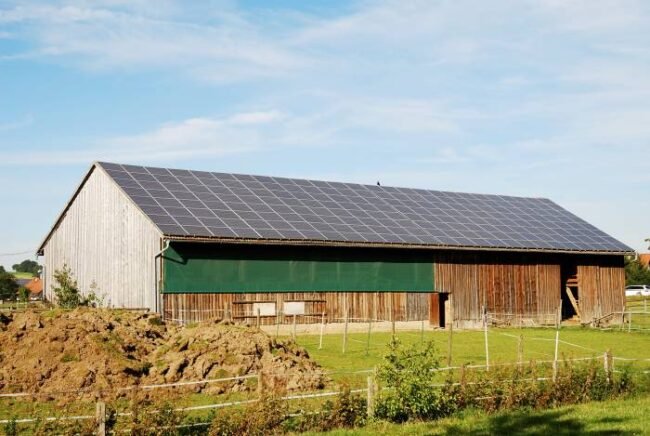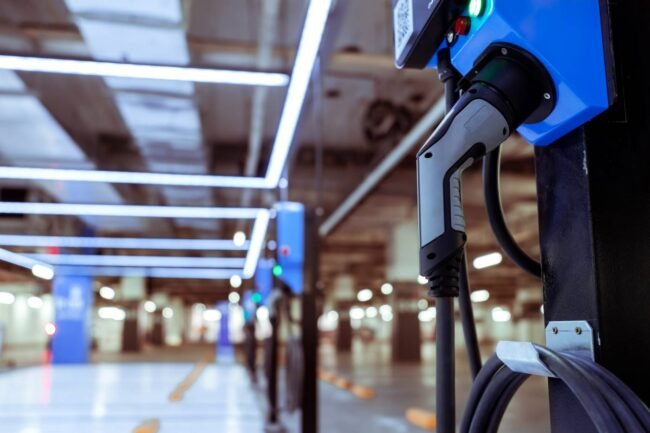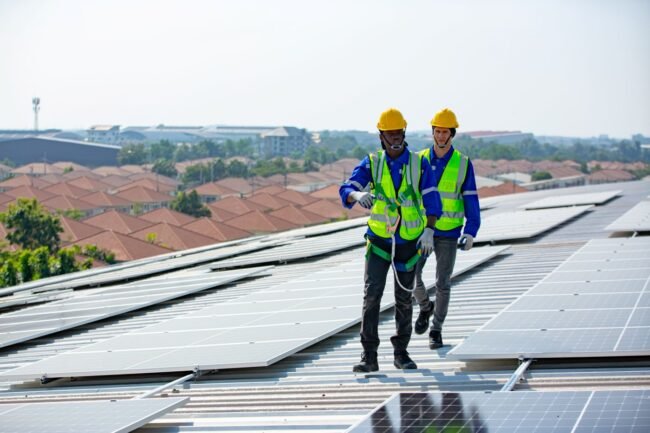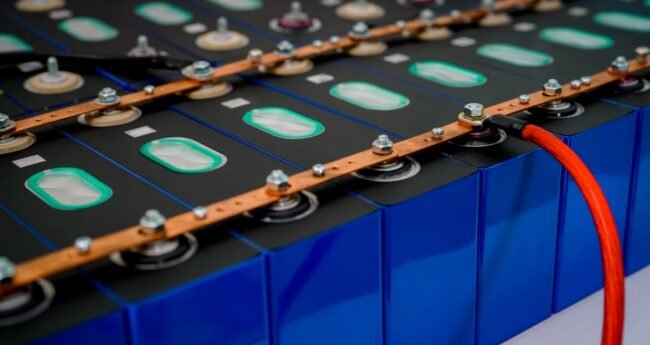Installation of Commercial EV Charging Points for a Retail Complex

A major retail complex aims to enhance its facilities by installing EV charging points, appealing to eco-conscious customers and increasing foot traffic. They require a solution that is cost-effective, scalable, and integrates renewable energy sources to align with sustainability goals.
1. Assessment and Consultation:
- Conduct a thorough site survey to identify optimal locations for charging points.
- Analyse existing electrical infrastructure and forecast future demand.
2. Custom Design Solutions:
- Develop a tailored plan featuring a mix of AC and DC fast chargers to cater to different customer needs.
- Incorporate roof-mounted solar PV panels and flexible solar canopies in the parking area to generate renewable energy on-site.
3. Grid Connection and Upgrades:
- Upgrade the grid connection from LV to 11kV to support increased load, ensuring minimal disruption during peak hours.
- Coordinate with local utilities for necessary approvals and compliance.
4. Installation and Integration:
- Execute the installation with a focus on safety and efficiency, utilising our experience.
- Integrate battery storage solutions to store excess solar energy and manage load balancing.
5. Aftercare and Support:
- Provide ongoing maintenance services, real-time monitoring, and customer support to ensure optimal operation.
- Offer training for staff on managing the charging points and renewable systems.
The retail complex successfully attracts a new segment of environmentally conscious customers, increases dwell time, and demonstrates corporate responsibility. The integrated renewable energy systems reduce operational costs and carbon footprint.
Solar PV Installation for an Agricultural Facility

A large farm seeks to reduce energy costs and promote sustainable practices by harnessing solar energy. They require a solution that accommodates the expansive land while being mindful of agricultural activities.
1. Site Evaluation:
- Evaluate unused land areas and existing structures (e.g., barn roofs) for solar PV installation.
- Assess energy consumption patterns to size the system appropriately.
2. Customized System Design:
- Propose a combination of roof-mounted and ground-mounted solar PV systems.
- Utilise flexible solar PV panels where traditional panels are impractical due to structural limitations.
3. Battery Storage Integration:
- Incorporate battery storage to ensure energy availability during non-sunny periods and reduce dependence on the grid.
- Implement energy management systems for optimal usage and distribution.
4. Regulatory Navigation:
- Handle all planning permissions, grid connection applications, and compliance with agricultural land use regulations.
- Explore available grants and incentives for renewable energy in agriculture.
5. Professional Installation:
- Schedule installation to minimize interference with farming operations.
- Ensure all work is conducted safely, respecting the client’s property and livestock.
6. Aftercare Services:
- Offer maintenance packages to keep the system running efficiently.
- Monitor performance and provide regular reports on energy savings and environmental impact.
The agricultural facility significantly cuts energy expenses, gains energy independence, and enhances its reputation as a sustainable business. The project sets a precedent for renewable energy use in the local farming community.
Grid Connection Upgrade for an Industrial Park

An industrial park is expanding and requires an upgraded grid connection to support additional facilities and future-proof the infrastructure for upcoming technologies like EV charging and increased automation.
1. Load Analysis and Forecasting:
- Analyse current and projected energy demands considering the expansion plans.
- Factor in potential adoption of renewable energy systems and EV infrastructure.
2. Grid Connection Solution:
- Design and execute an upgrade from LV to 11kV grid connection.
- Serve as the ICP, managing all aspects of the connection process, including design, construction, and liaison with the Distribution Network Operator (DNO).
3. Infrastructure Enhancement:
- Upgrade internal electrical networks to handle higher capacity.
- Install smart grid technologies for better energy management and efficiency.
4. Sustainability Integration:
- Propose optional integration of solar PV and battery storage systems to offset energy costs.
- Plan for the installation of communal EV charging stations for tenants and visitors.
5. Project Management:
- Coordinate with multiple stakeholders to ensure a seamless upgrade without disrupting existing operations.
- Adhere to strict timelines and budget constraints.
- Compliance and Certification:
- Ensure all work meets regulatory standards.
- Provide full certification and documentation upon project completion.
The industrial park successfully expands its operations with a reliable and robust electrical infrastructure. Enhanced energy capacity and smart technologies position the park as a modern, sustainable business hub, attracting high-value tenants.
Commercial EV Charging Infrastructure for a Logistics Hub

A logistics company requires a fleet charging solution for 20 electric vans, with the potential to scale up in the future.
1. Assessment and Consultation:
- Conduct a comprehensive site survey to evaluate current fleet operations and forecast future charging needs.
- Review existing electrical infrastructure and future scalability requirements
- Propose new grid connections if the existing capacity doesn’t meet their current requirement or vision for the future.
2. Custom Design & Technology Integration:
- Design a tailored solution featuring a mix of AC and DC fast chargers to accommodate diverse charging speeds.
- Integrate a smart load management system to optimise power distribution across the fleet.
3. Renewable Energy and Storage Integration:
- Incorporate a battery storage system to offset peak demand charges.
- Install solar PV panels on available roof space to enhance energy efficiency and reduce reliance on grid power.
4. Installation and Support:
- Execute the installation with precision, ensuring minimal disruption to operations.
- Provide ongoing monitoring and support to guarantee system performance and scalability.
The resulting infrastructure is cost-effective and scalable, meeting operational demands while minimising energy costs and paving the way for future expansion.
Rooftop and Standalone Solar PV for a Manufacturing Facility

A manufacturing plant seeks to reduce its dependency on grid electricity and lower its carbon footprint.
1. Feasibility and Site Analysis:
- Conduct a detailed feasibility study to determine the most optimal locations for solar PV installation.
- Evaluate the potential for both rooftop and ground-mounted systems on available land.
2. Custom Design Solutions:
- Design and install a 500kWh rooftop solar system tailored to the facility’s energy profile.
- Complement the rooftop system with a ground-mounted solar farm to maximise renewable energy capture.
3. Energy Storage Integration:
- Integrate a battery storage system to store excess energy, ensuring power availability during peak demand periods.
4. Implementation and Support:
- Carry out the installation with a focus on safety and minimal operational disruption.
- Provide post-installation monitoring and maintenance to ensure sustained performance.
The integrated solar solution significantly reduces energy costs, provides a stable renewable power source, and lowers the facility’s carbon footprint.
Battery Storage and Grid Connection Upgrade for a Commercial Development

A property developer requires an upgraded grid connection and integrated energy storage solution for a new mixed-use development.
1. Assessment and Consultation:
- Evaluate the site’s energy demand and assess current electrical infrastructure.
- Coordinate with the Distribution Network Operator (DNO) to ensure compliance with grid connection standards.
2. Custom Grid Connection Design:
- Design an 11kV grid connection tailored to the development’s energy needs.
- Plan necessary upgrades to support increased load without service disruption.
3. Battery Storage Integration:
- Incorporate a battery storage system to provide backup power and improve overall energy efficiency.
- Optimize the system for both emergency support and load balancing during peak periods.
4. Project Delivery and Support:
- Execute the project on time and within budget while ensuring strict adherence to regulatory requirements.
- Offer ongoing maintenance and support to ensure reliable power for tenants.
The project delivers a reliable power supply for tenants with enhanced energy efficiency through a modernised grid connection and integrated battery storage solution.




